Vixen | Producer of optics from astronomical telescopes and binoculars
Vixen Telescope VSD90SS Optical Tube Assembly
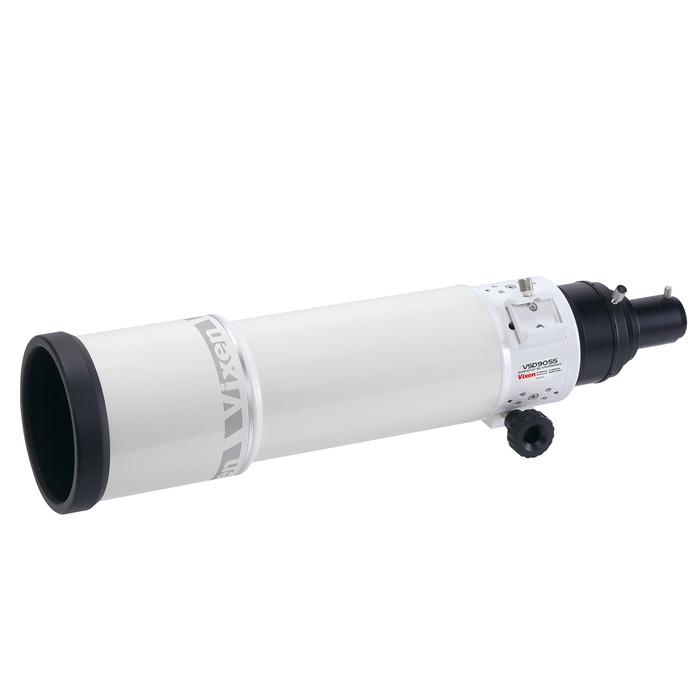
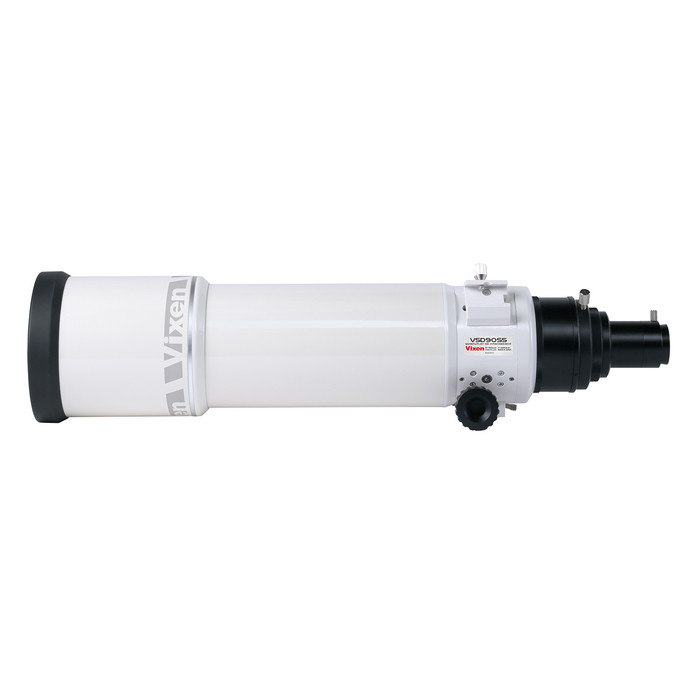
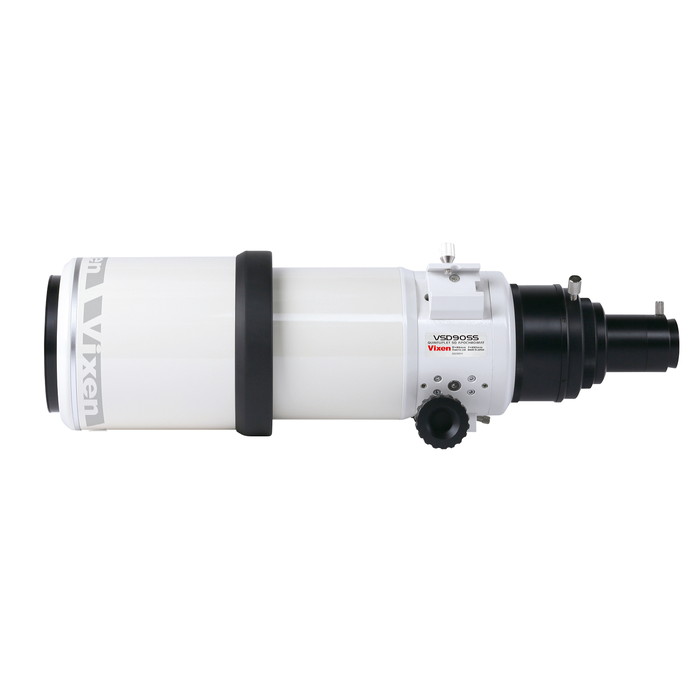



loading
Suggested retail price: Contact local dealer
A five-group-five-element Astrograph with fast focal ratio. A flagship model with outstanding performance and ease of use for visual observation and astrophotography.
The optical design, consisting of two SD lenses and one high-refractive-index ED lens is luxurious, and this construction delivers images free of aberrations practically. It achieves sharp and wonderfully beautiful star images that are even in image quality throughout the edges when you take the images with a full-frame digital SLR camera or a larger 44mm x 33mm format camera. You will enjoy incredibly high performance in visual observation and astrophotography, from observing planets at high magnification to capturing deep-sky objects in a relatively wide field of view.
Vixen Telescope VSD90SS Optical Tube Assembly Description
-
Sharp and beautiful stars even throughout the image field of a large format
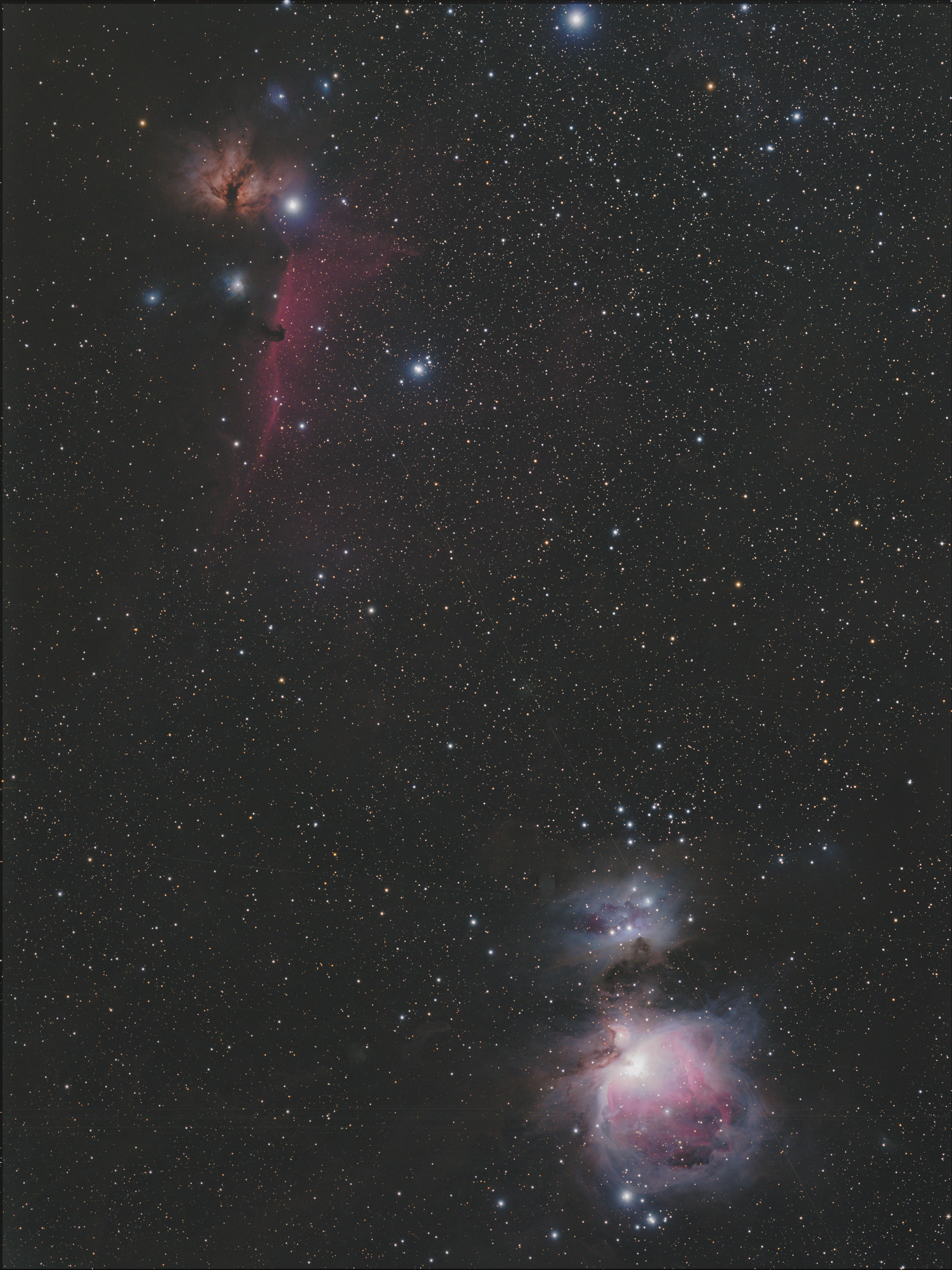
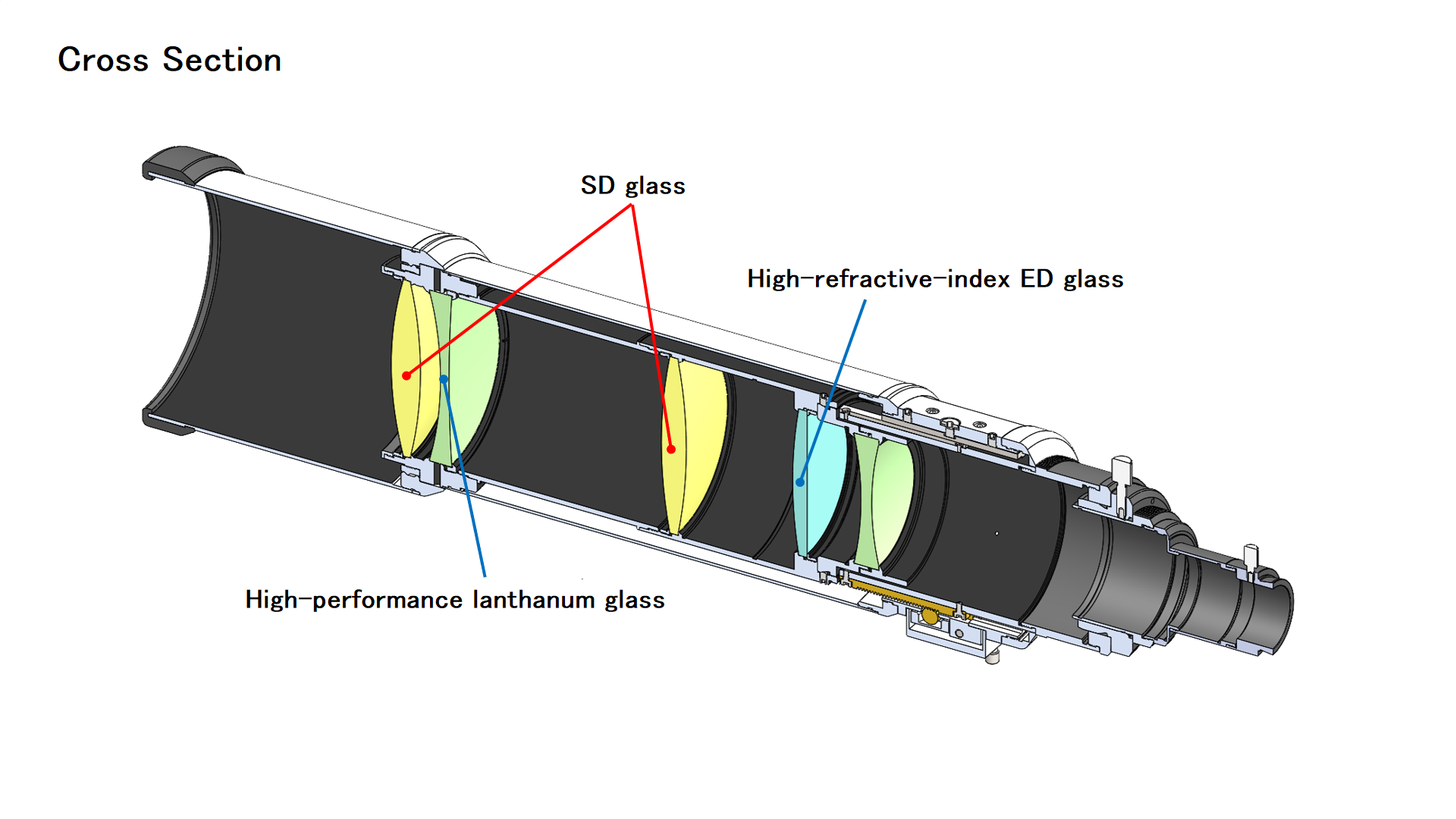

The VSD90SS uses two lenses of SD glass and one lens of high-refractive-index ED glass for convex lens, and it has two concave lenses of high-performance lanthanum glass that was newly developed.
It successfully depresses on-axis chromatic aberration and astigmatism to the utmost limit.
Not only in the center and on the edges of a full-frame digital SLR camera but also on the edges of a large 44mm x 33mm* format imaging sensor, the images are sharp and uniform wonderfully.
*36mm x 24mm if used with a Focal reducer V0.79X -
Holding round star images stably due to 'peak gradualness' in the setting accuracy
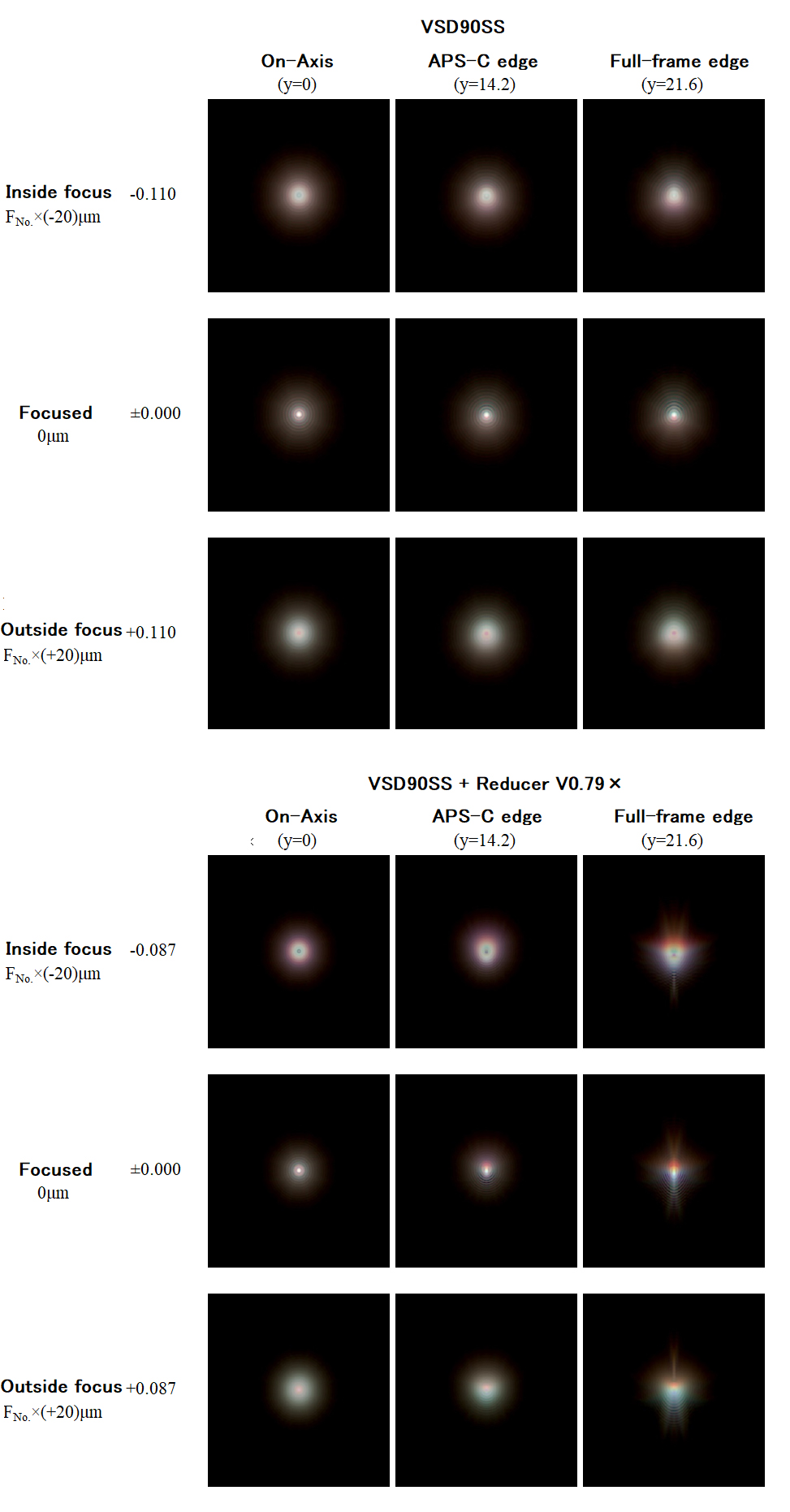
The VSD90SS attaches importance to "long peak range" in the setting accuracy to make users obtain a satisfactory result in astro-imaging, regardless of their levels and skills.
The VSD90SS adopts the design that widens out a sharp focus range while staying inside the Airy disc,
which allows for reducing the change in a tint of star colors and collapse of star images on the edges of the image field,
even if you missed the focusing adjustments little or you failed to put squaring adjustments into a corner precisely.
As a result, round, crisp, and beautiful stars are imaged in the entire photography field. You can expect to secure stable results in shooting and image processing after your imaging session. You can take advantage of celestial shooting opportunities with the VSD90SS. -
Entirely illuminated image circle without vignetting
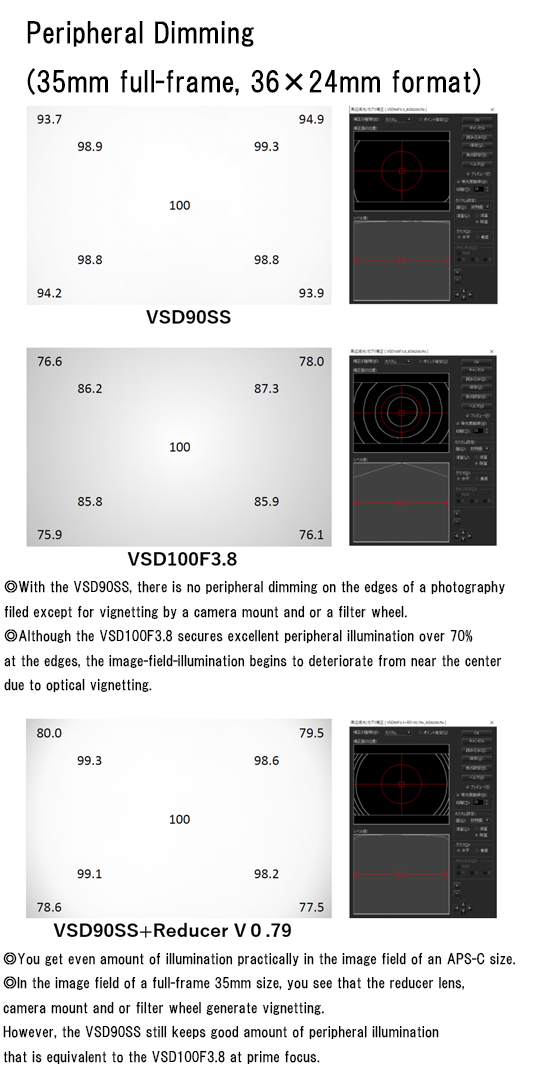
Generally, Astrographs can generate optical vignetting, a gradual decrease in light rays towards the image periphery produced by rear lenses shaded by the lenses in front.
Because of this peripheral dimming, it was not rare for users to have the necessity to process the image for compensation after shooting. To solve this problem, VSD90SS employs large aperture lenses in the rear elements and secures over 90% of light rays at the edge of a 60mm image circle.
As the light intensity is even entirely in the image field, you are expected not to need to compensate for the peripheral dimming, or make the compensation easier in the image processing later. -
Variety of light graduations brings beautiful stars in the image field.

The least optical vignetting results in securing sufficient peripheral illumination and thus eliminates asymmetry flare arising from bright stars of diffraction-limited.
It prevents star images on the edge of the 60mm image circle from collapsing shapes.
As graduations of light getting from the overall illumination are rich, you can expect beautiful consequences of your imaging successfully.
*Mechanical vignetting may occur by a camera body, a camera mount, and so on, depending on the shooting system you use. -
The MTF diagram reveals high resolution and high contrast
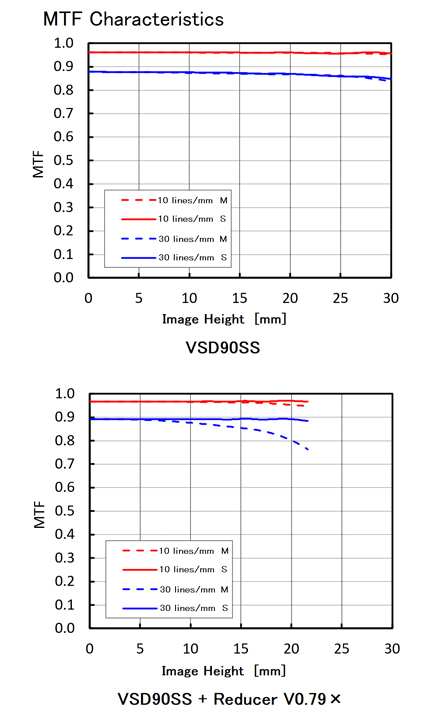
The MTF (Modulation Transfer Function) indicates rating index of optical performance of a lens group by characteristics of spatial frequencies.
It reveals how well the resolving power of a lens, and the contrast of a photographing object can be reproduced on the imaging plane.
In the diagram the distance from the center of the image is given on the horizontal axis, and the contrast value (Max. 1) on the vertical axis. It means that the closer the curve of 10 lines per mm to 1, the higher the contrast, and the closer the curve of 30 lines per mm to 1, the higher the resolution.
As indicated in the diagram,the contrast values are all close to 1, it verifies that the VSD90SS is a highly excellent optical system. -
Flat imaging field!, 96.7% Strehl ratio!, Great visual observing!
The VSD90SS provides a flat field of view using a wide-field eyepiece of low magnification.
With a quality wide-field eyepiece, you get sharp images of stars in the whole field of view in visual observation.
The center of field of view achieves strehl intensity of 96.7% proudly in visual-ray-wavelengths.
This strehl ratio exceeds the SD81SII apochromat at 95.7%, recognized with its superb optics, and it works excellently in observing planets at high magnification. -
The large focuser with versatility
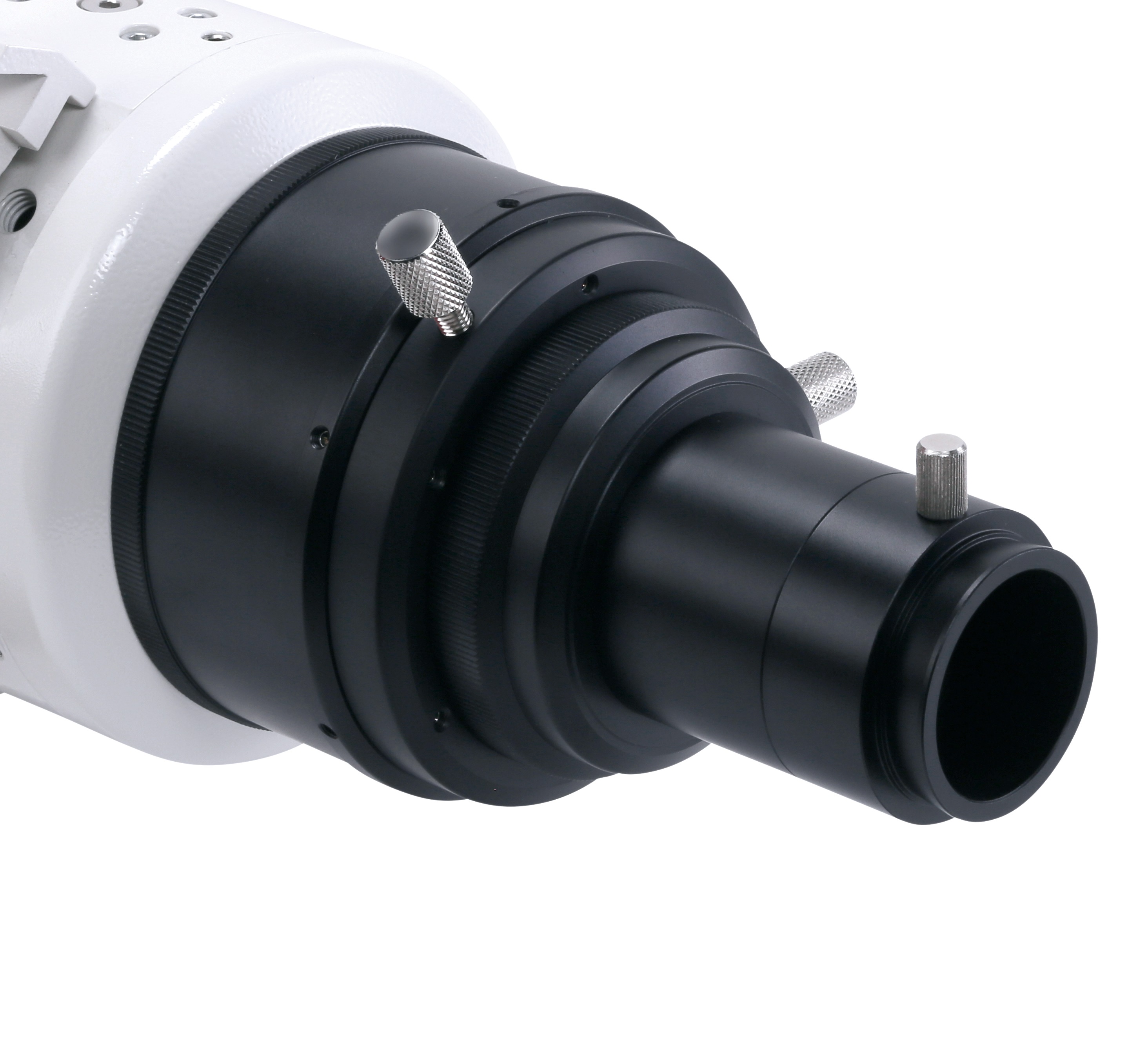
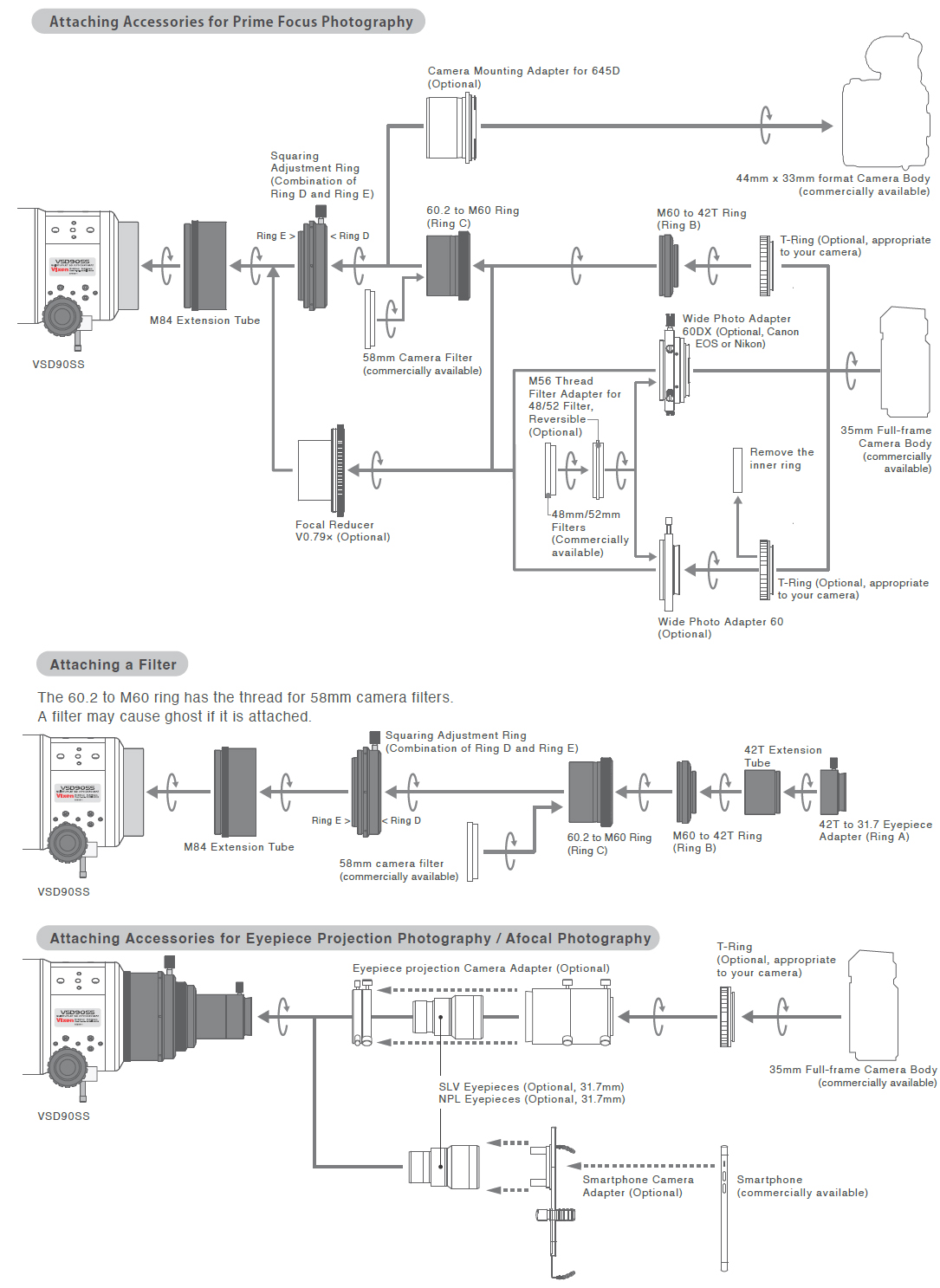

The VSD90SS employs the large focuser with a diameter of 87.5 mm to make the most use of the large 60mm image circle with excellent peripheral illumination.
Using the large focuser compatible with many accessories, it is versatile in various scenes,
including astrophotography with a large format or 35mm full frame DSLR camera and visual observation. -
Drawtube precision lock lever
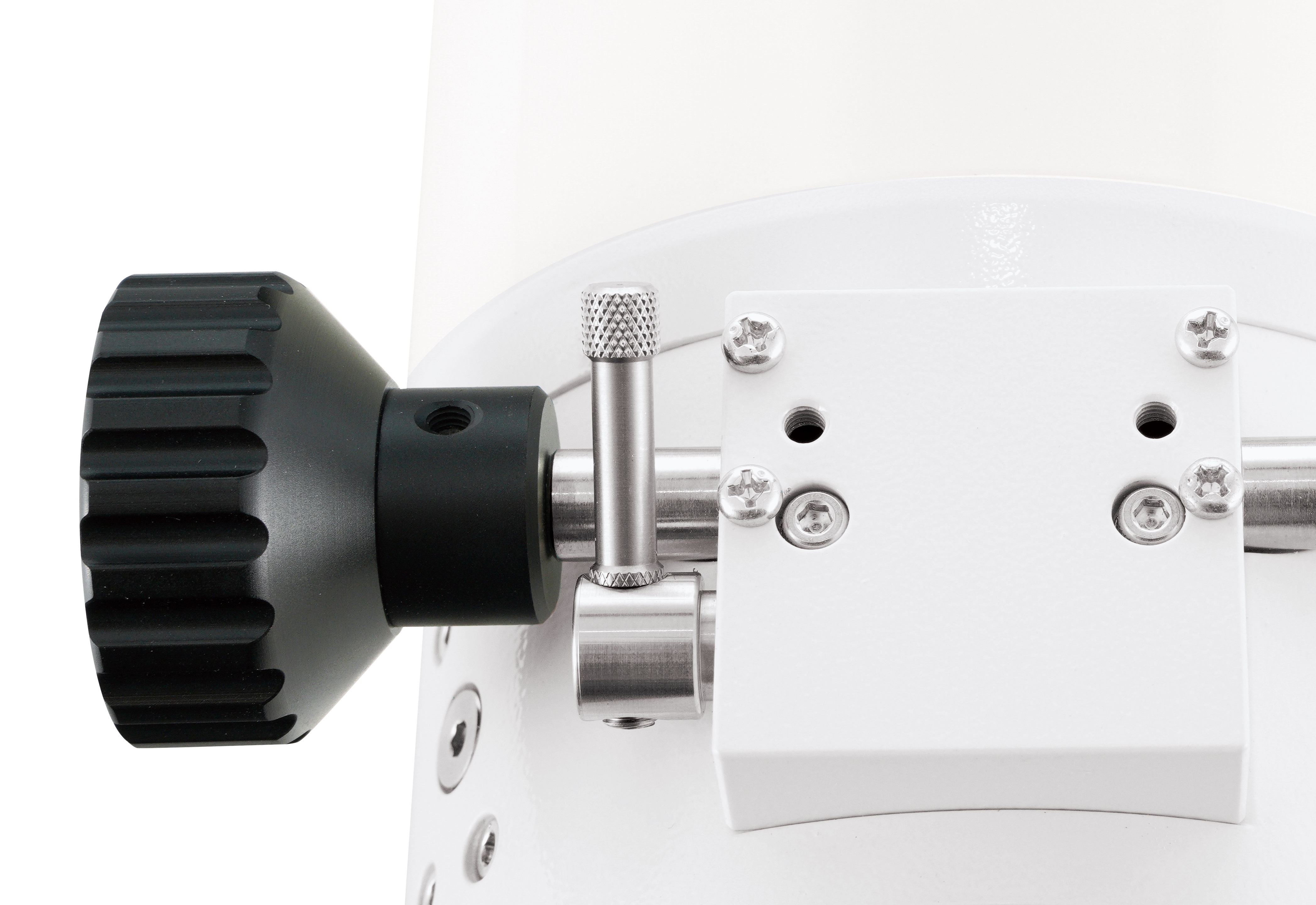
The focuser drawtube has a lock lever that secures the drawtube firmly in place even if you use heavy imaging equipment like a large format camera or a CCD camera with a large sensor size.
The lock lever pinches the rack gear on the drawtube to fix so that the angle of view or focus does not shift on your imaging equipment at the behavior of the lock lever. -
Compatible with motor-driven focusers
An optional dual-speed focuser (sold separately) is available for the VSD90SS to allow for delicate focusing.
Also, an EAF(Electronic Automatic Focuser) by ZWO or equivalent is attachable. -
Compact short optical tube for easy storage
The VSD90SS optical tube has a 600mm overall length and shortens to 476mm by attaching the dew shield in the reversed direction.
(You even make it shorter to 402mm by removing all the rings on the rear.)
A highly compact size when you store it and transporting is ready. -
A wide variety of accessories supporting your visual observation and astrophotography
VSD Tube Ring 115S
A must item when mounting the optical tube on an equatorial platform.
Click here for details
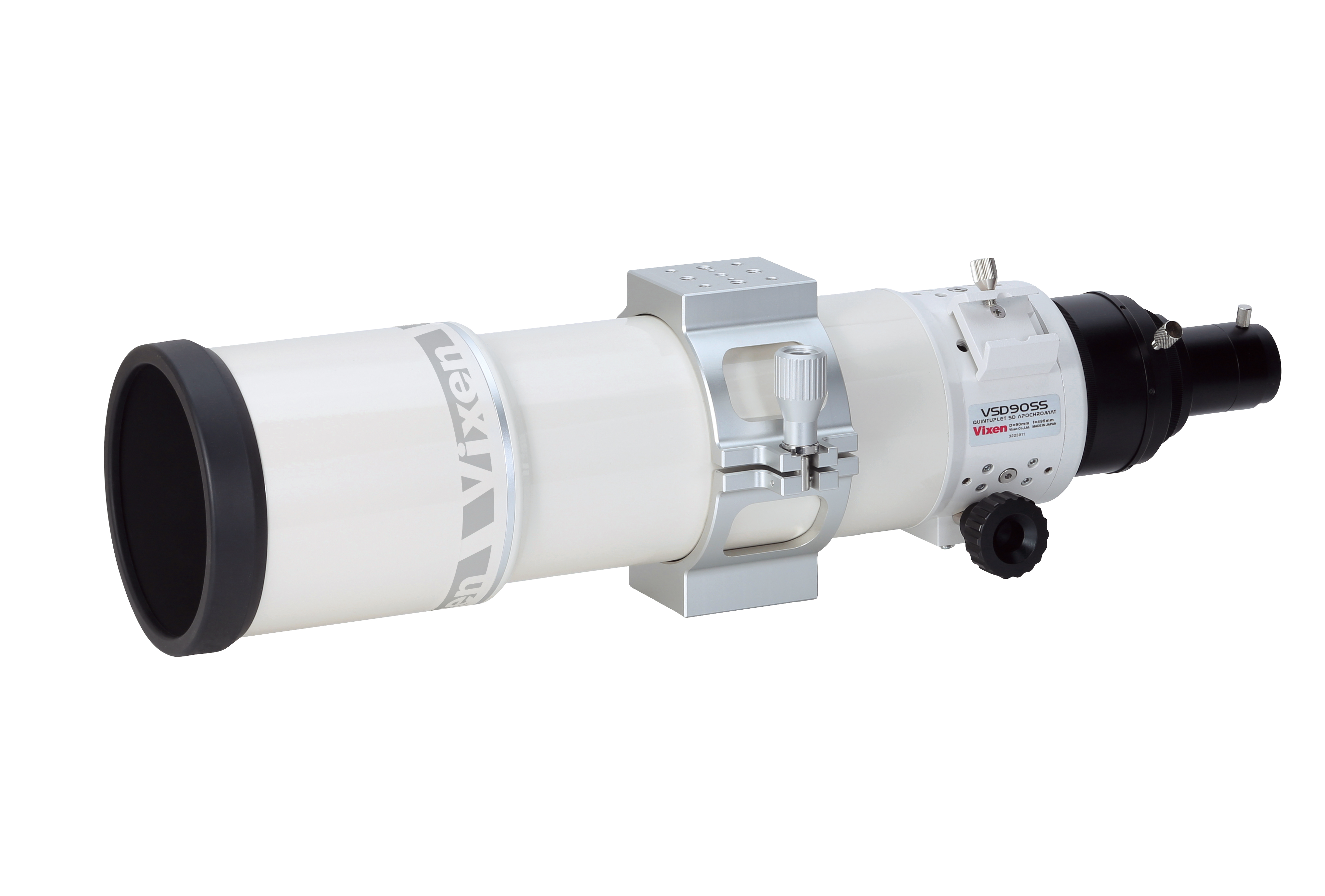
Storage Case for VSD90SS
It is an exclusive case for VSD90SS.Click here for details
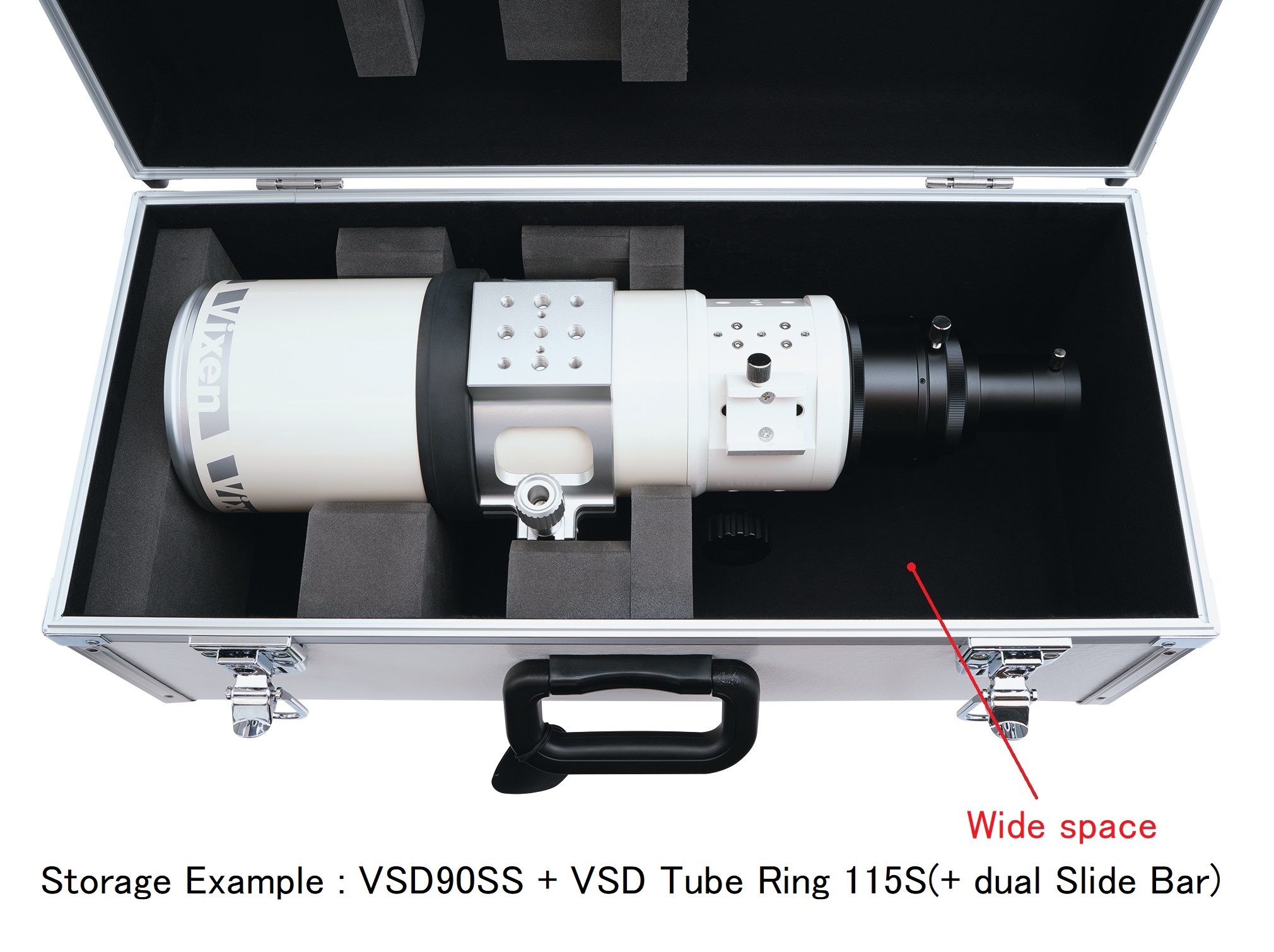
Specifications
VD90SS Optical Tube Assembly
-
Objective Design / Effective ApertureFive-group five-element SD Apochromat, AS coatings / 90mm
-
Focal Length (Focal Ratio)495mm (F5.5)
-
Resolving Power・Limiting Magnitude1.29 arc seconds・11.5
-
Light Gathering Power165X unaided eye
-
Image Circle60mmφ(Over 90% illumination at the round edge)
-
Optical Tube Size・Weight115mm dia. X 600mm long (476mm long for storage), 4.3kg
VD90SS Optical Tube Assembly
-
FinderscopeNot included, 7X50mm Finder with illuminated reticle, 50mm XY Finder bracket II sold separately
-
Focusing SystemRack-and-pinion
-
Accssory Threads / SizeThreads/ 84mm (pitch 1mm), 60mm (pitch 1.0mm), 42mm for T-ringPush-fit / 60.2mm, 50.8mm, and 31.7mm
-
Eyepiece (31.7mm)Not included, SLV series of eyepieces sold separately
-
Plates and/or Tube RingsNot included, VSD Tube Ring 115S, Dual Slide Bar sold separately
-
Provided AccessoriesVSD60.2 to 50.8 Adapter, 2mm and 1.5mm Allen wrenches
VD90SS Optical Tube Assembly
-
PhotographyEyepiece Projection, Prime Focus, and Aforcal Imaging with a smartphone are possible *1, *2
-
Solar ObservationUsing Sun projection screen Set B sold separately (Short-time observing is recommendable)*2
-
*1: An optional camera adapter or such is needed also.*2: An eyepiece is needed also.
Share this page